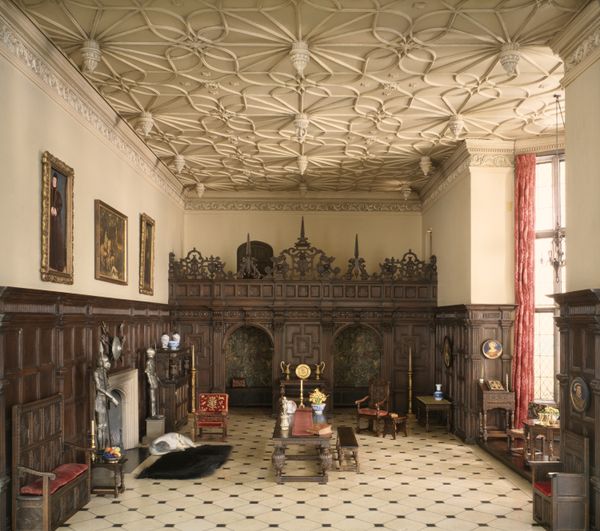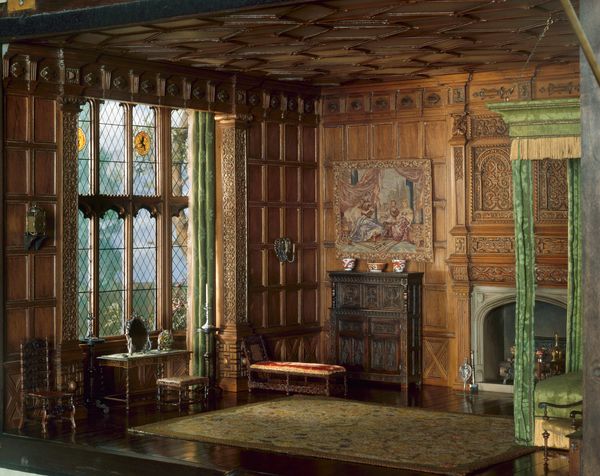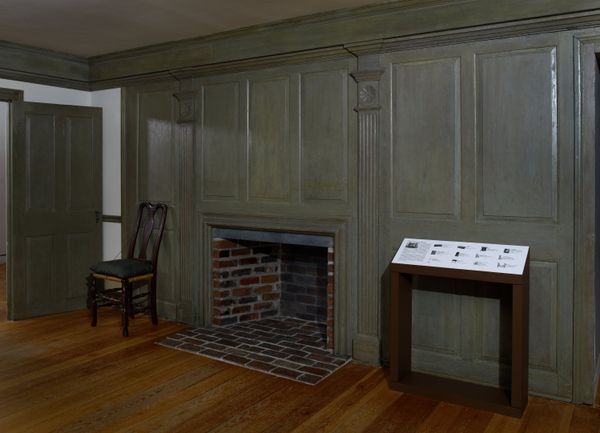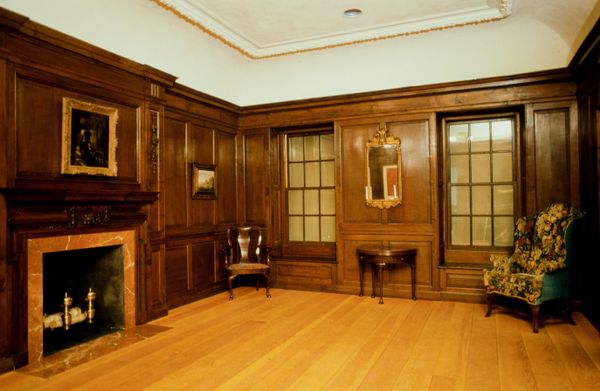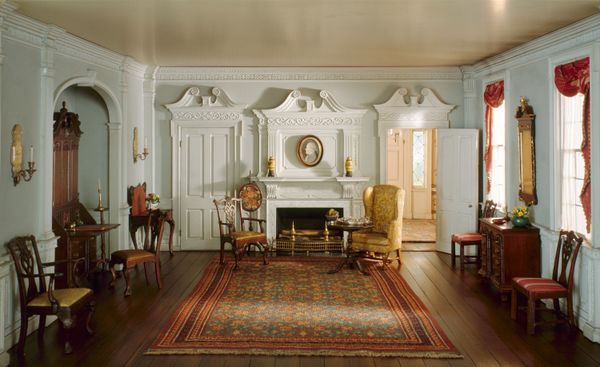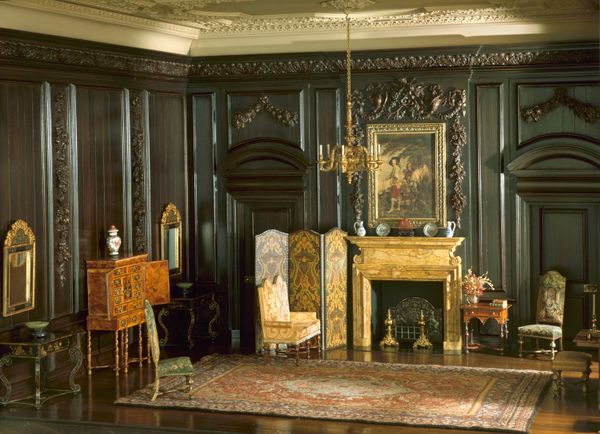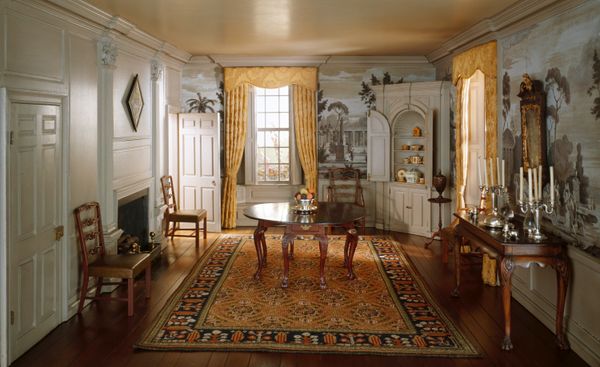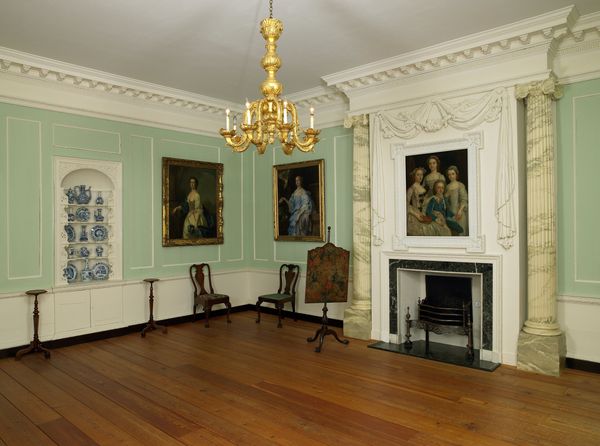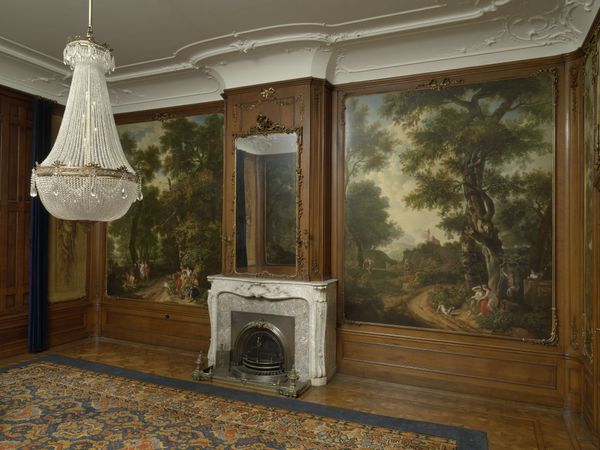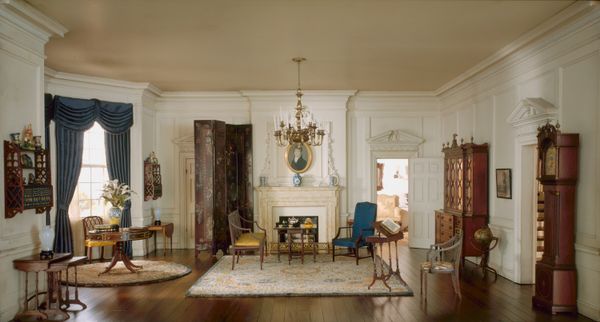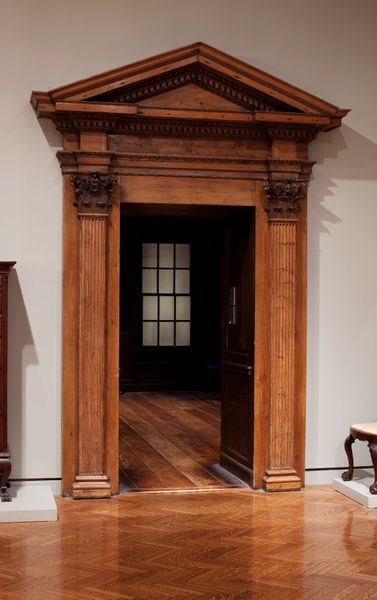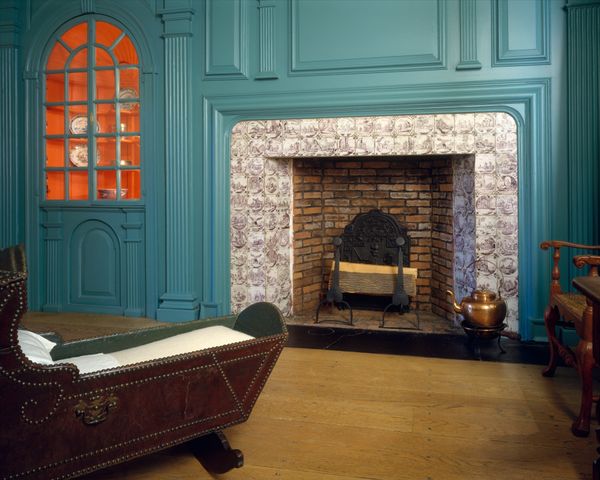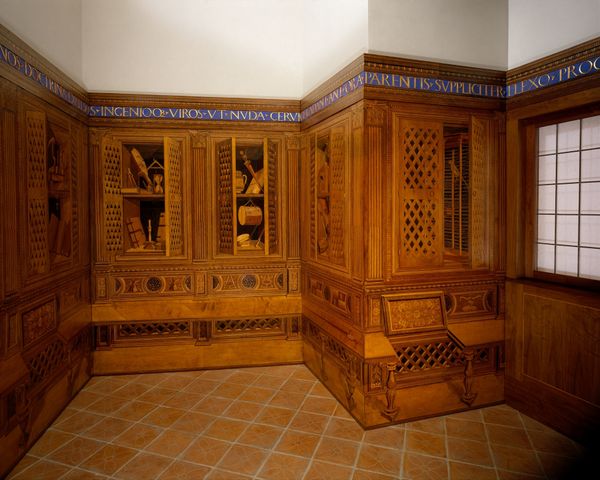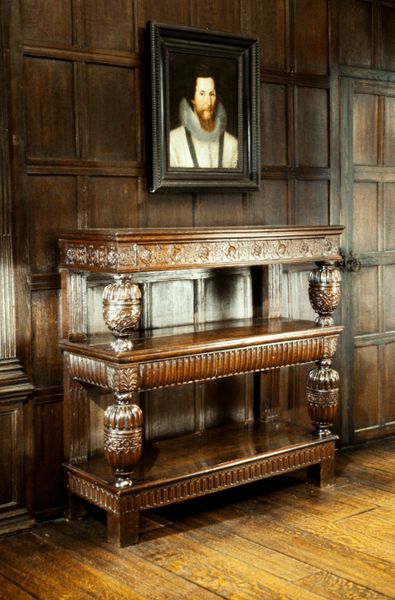
carving, glass, wood, architecture
#
portrait
#
interior architecture
#
medieval
#
carving
#
11_renaissance
#
glass
#
wood
#
architecture
Copyright: Public Domain
This Tudor room was constructed by anonymous artisans. As you look around, consider the dialogue between light and shadow, texture and line that defines this space. The dark wood paneling absorbs light, creating a sense of enclosure, while the intricate patterns of the ceiling offer a stark contrast in both color and texture. Notice how the room's design invites us to consider its semiotic function. The heavy wood, the elaborate carvings, and the placement of objects all speak to a desire for order and status. The formal arrangement of furniture suggests specific patterns of social interaction and reinforces established power dynamics. The room’s structure, with its emphasis on symmetry and balance, serves to assert control over the natural world. The very act of enclosing space with carefully crafted materials is a statement about human agency and the desire to shape our environment. Consider how the room is not merely a backdrop, but an active participant in shaping its inhabitants' perceptions and behaviors.
